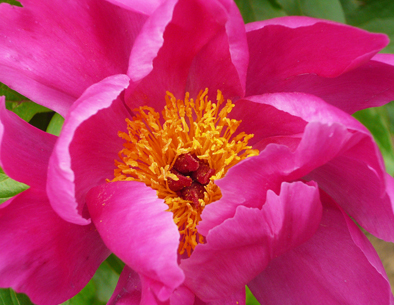Chinese Peony
2011-07-14

Paeonia lactiflora, also Chinese Peony and common garden peony is a herbaceous perennial flowering plant in the family Paeoniaceae, native to central and eastern Asia from eastern Tibet across northern China to eastern Siberia. It is about 60–100 cm tall with large compound leaves 20–40 cm long. The flower buds are large and round, opening into large flowers 8–16 cm diameter, with 5-10 white, pink, or crimson petals and yellow stamens.
Chinese Peony is widely grown as an ornamental plant in gardens, with several hundred selected cultivars; many of the cultivars have double flowers, with the stamens modified into additional petals. It was first introduced to England in the mid-18th century, and is the species that has produced most common garden peonies today. It was known as P. albiflora for many years, and as the white peony when first introduced into Europe. There are many colors now available, from pure milk white, to pink, rose, and near red—along with single to full double forms. They are prolific bloomers, and have become the main source of peonies for the cut flower business. In China, it is less highly valued as an ornamental plant than the cultivars of tree peony Paeonia rockii (tree peony, known as ziban mǔ dān in Chinese) and its hybrid Paeonia x suffruticosa, or mǔ dān ( 牡丹). (Source: Wikipedia)